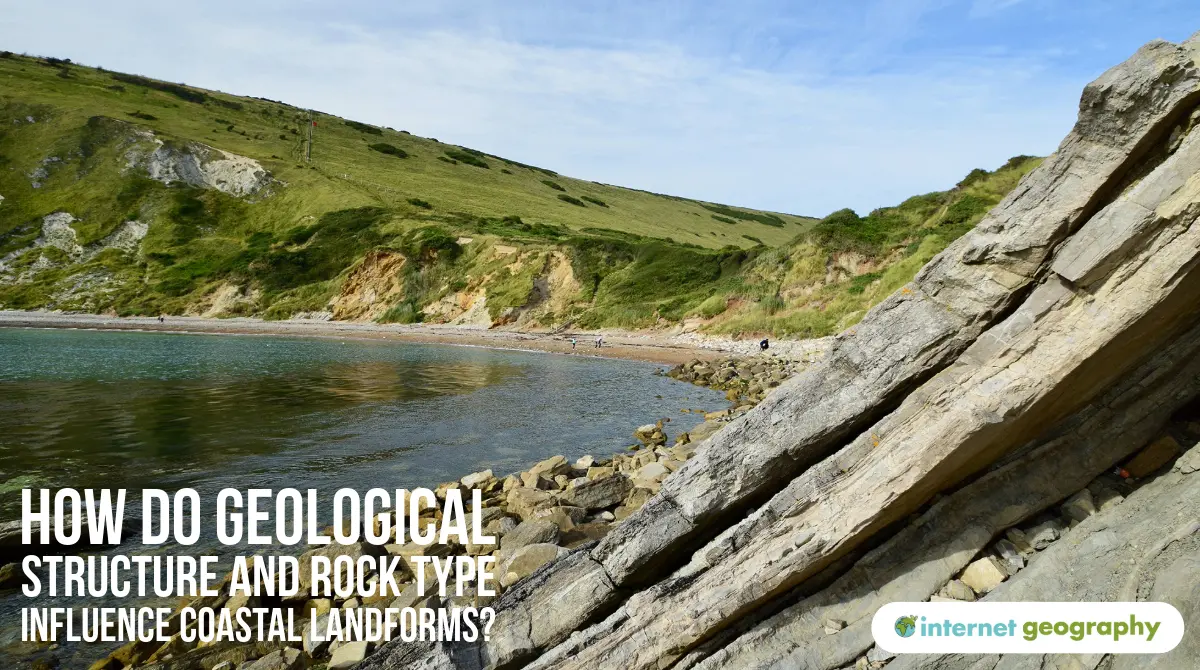How do geological structure and rock type influence coastal landforms?
What is a landform?
You will always come across the term ‘landform’ in physical geography. A landform is a feature of the landscape that has been formed or sculpted by processes of:
Understanding how coastal landscapes are shaped begins with looking at the geology of the coast. Two key factors play an important role in shaping landforms along the coastline:
- Geological structure – how rock layers are arranged
- Rock type – how hard or soft the rocks are
Rock type
As more resistant (hard) rocks, such as chalk and limestone, erode more slowly than less resistant rocks, they project into the sea as headlands.
Soft, less resistant rocks (e.g., clays and sands) have lower structural strength and are easily eroded. Less resistant rocks typically produce lower cliff profiles that experience mass movement, such as mudslides and slumping. Bays are also often found in areas of less resistant rocks.
The coast is called concordant if the rock beds run parallel to the edge of the sea. High cliffs and coves can identify concordant coasts. If the rock beds run perpendicular (at a right angle) to the sea’s edge, the coast is called discordant. Headlands and bays can identify discordant coasts.
Structure
Geological structure refers to the arrangement of rocks, including the presence of joints, faults, folds, and the orientation of rock layers (known as bedding planes).
Geological structure refers to the arrangement of layers of rocks, which may be folded or tilted. This can be an important factor in the shape of cliffs. Faults are cracks in rocks. Enormous tectonic pressures can cause rocks to ‘snap’ rather than fold (bend), and movement (or displacement) happens on either side of the fault. Faults form lines of weakness in rocks and are easily carved out by the sea, forming landforms such as caves and arches.
Concordant and Discordant Coastlines
Concordant coastlines occur when rock layers run parallel to the coastline.
- Hard rock protects softer rock behind it.
- These coastlines can form coves, such as Lulworth Cove on the Dorset coast.
Discordant coastlines occur when rock layers run at right angles to the coastline.
- Here, bands of hard and soft rock are exposed to erosion.
- The softer rock erodes faster, creating bays, while the more resistant rock forms headlands.

